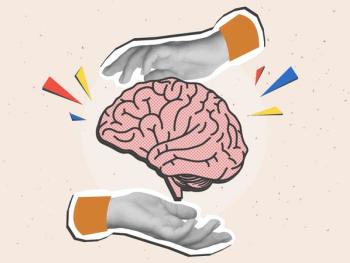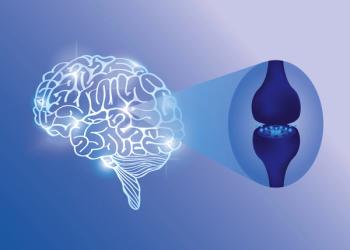
- Vol 40, Issue 5
Lithium: Past, Present, and Future
Lithium, a naturally occurring element, occupies the third position on the periodic table with the chemical symbol, Li. The name lithium comes from the Greek word lithos, meaning stone. It is one of the most abundant elements in nature with a wide distribution in trace amounts in seawater, rocks, ground, and soils. It is present in drinking water, leafy green vegetables, legumes, pods, and nuts in variable concentrations depending on the geographic location.1 It was first discovered in 1817 on the Swedish island of Utö and later found in the mines of Australia and Chile, but it was not until the late 1800s that lithium made its debut in the medical world. Mineral springs containing lithium were thought to possess healing properties for mental ailments, such as melancholia and mania, and physical ailments such as gout.
In 1870, lithium bromide—a compound of lithium—was recommended as an anticonvulsant and hypnotic for patients with epilepsy by neurologist Silas Weir Mitchell, MD. In 1871,
John Cade’s Discovery
In 1947, Australian psychiatrist John Cade, MD, accidentally discovered lithium’s calming properties by injecting it as a solution base mixed with urine from his patients with mania into guinea pigs. Cade believed that mental illness had a biological and psychological component, and hence needed medication treatment along with talk therapy.4 He postulated that mania was caused by high levels of a “toxin” in the body that was excreted in the urine. By injecting the “toxic” urine from his patients into the guinea pigs, he wanted to see if he could induce the same manic effects in the rodents.5 Instead, he discovered that lithium solution-based injections calmed the guinea pigs. He followed this accidental discovery with his first clinical report in 1949, where he stated that
Bipolar Disorder
In 1970, the US Food and Drug Administration approved lithium for the treatment of patients with bipolar disorder (BD). Today, lithium remains the gold standard for the management of BD in both acute and chronic cases. It is a potent and effective mood stabilizer, but because the therapeutic index of lithium is narrow, blood levels require careful monitoring. Adverse effects from lithium toxicity are serious and include renal, thyroid, cardiac, parathyroid, and neurological effects. Like other mood stabilizers, lithium carries medical risks, most notably hypothyroidism and renal impairment. However, most of lithium’s adverse effects (
Suicide
Besides its benefits in BD, lithium has preventative effects against
Discussion
Lithium also has neuroprotective properties, which may explain its strong preventative effects. Patients with BD taking lithium have been found to have larger hippocampus volumes. A mini review of 13 studies identified lithium’s neurotrophic effects while comparing lithium treated patients with those not taking lithium.13 Nine of the 13 studies demonstrated an increase in hippocampal volumes of patients taking lithium.13 Furthermore, a study in Texas suggested that higher levels of lithium in public water supply offered protective effects in the prevention of death by suicide.14 Another study in Texas using statistics from 27 Texas counties from 1978 to 1987 showed that the incidences of homicide, rape, and suicide were much lower in areas where lithium levels in drinking water ranged from 70 to 170 mcg/L.15
More recently, studies have tested lithium for potential preventative effects against
Lithium facilitates neurotrophic and neuroprotective responses in the brain. The exact mechanism by which lithium produces these effects is largely unknown. However, it has been hypothesized that it works by inhibiting GSK-3. GSK-3 is a key player in neurological disorders and has a major role in neuron deterioration by impairing cellular clearance leading to the accumulation of neurotoxic aggregates. Inhibition of this enzyme could have a potent beneficial effect in protection from neurodegeneration.18 These results further reinforce the disease-modifying properties of lithium in the MCI-Alzheimer disease group.16 Lithium remains beneficial and safe in the older population, but lower serum levels are recommended for individuals older than 60 years because lithium crosses the blood-brain barrier more readily in that population.19
Concluding Thoughts
There is substantial scientific evidence of lithium’s successful track record in psychopharmacology for more than 60 years. The results from studies to assess its possible use and effectiveness in preventing/modifying the effects of Alzheimer disease are also promising. However, more research needs to be conducted to further explore and confirm its neurotrophic and neuroprotective properties and use, specifically in the treatment of patients with dementia. Lithium may just be the answer we are so desperately in search of, the missing link, the wonder drug for an illness that we have so little to offer to patients.
Dr Raza is a research volunteer in the Department of Psychiatry & Behavioral Health at Hackensack Meridian Health in New Jersey. Dr Doumas is the chief of the Division of Child & Adolescent Psychiatry, the residency program director, and vice chair of education and research at Jersey Shore University Medical Center. Dr Afzal is the medical director at the outpatient psychiatry faculty practice, assistant professor, Department of Psychiatry & Behavioral Health, Hackensack Meridian School of Medicine, and residency program director at Ocean University Medical Center.
References
1. Aral H, Vecchio-Sadus A. Lithium: environmental pollution and health effects. In: Nriagu JO, ed. Encyclopedia of Environmental Health. 2011:499-508.
2. Shorter E.
3. Blazeski G. When 7-Up was created in 1929 it contained lithium, a mood-stabilizing drug. The Vintage News. January 16, 2017. Accessed February 28, 2023.
4. Lowe J. ‘I don’t believe in God, but I believe in lithium.’ The New York Times. June 25, 2015. Accessed February 28, 2023.
5. Schioldann J.
6. Cade JF.
7. Gitlin M.
8. Lexicomp. Lithium: drug information. UpToDate. 2023. Accessed February 28, 2023.
9. Lewitzka U, Severus E, Bauer R, et al.
10. Zakowicz P, Skibińska M, Wasicka-Przewoźna K, et al.
11. Baldessarini RJ, Tondo L, Davis P, et al.
12. Unipolar depression in adults: treatment with lithium. UpToDate. 2022. Accessed February 28, 2023.
13. Lucini-Paioni S, Squarcina L, Cousins DA, Brambilla P.
14. Blüml V, Regier MD, Hlavin G, et al.
15. Schrauzer GN, Shrestha KP.
16. Forlenza OV, Radanovic M, Talib LL, Gattaz WF.
17. Chen S, Underwood BR, Jones PB, et al.
18. Rippin I, Eldar-Finkelman H. Novel modality of GSK-3 inhibition for treating neurodegeneration. J Neurol. 2018;3(6):5-7.
19. Aziz VM. Lithium use in bipolar older people. Otorhinolaryngol Head Neck Surg. 2019;4(5):1-2.
Articles in this issue
over 2 years ago
Substance Use Among Adolescents and Young Adultsover 2 years ago
The Urgent Need to Address Youth Mental Healthover 2 years ago
White House Announces Record Health Insurance Enrollmentover 2 years ago
Hospital Foodover 2 years ago
Investigating the Impact of ADHD on Smoking Cessation Outcomesover 2 years ago
Aerobic Exercise: Benefits Following Brain Injuryover 2 years ago
Social Psychiatric Predictionsover 2 years ago
Addressing Narcolepsy: Approaches and AdvancesNewsletter
Receive trusted psychiatric news, expert analysis, and clinical insights — subscribe today to support your practice and your patients.













